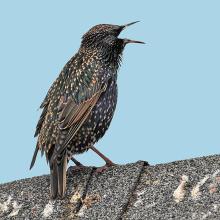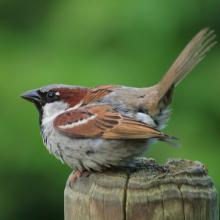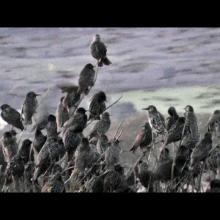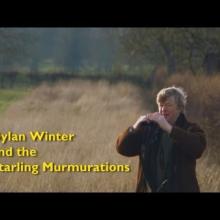

Join BirdNote tomorrow, November 30th!
Illustrator David Sibley and actor H. Jon Benjamin will face off in the bird illustration battle of the century during BirdNote's Year-end Celebration and Auction!
I’ve been wondering why some birds, especially some of the introduced species, seem to be so well adapted to cities. They certainly didn’t evolve in cities, yet they are right at home where we’re right at home.
Could it be because we tend to introduce birds that are familiar to us, which would often be those that have already adapted to living around human populations? But why and how have these birds adapted to living with people? To answer this question, it would be worth thinking about what birds need and what we have to offer to fill those needs. First, let’s list the most common birds in cities over much of the world: Rock Pigeon, House Sparrow, and European Starling (the latter replaced in the tropics by another starling, the Common Myna).
What do these species have in common? The primary diet of the first two consists of seeds. Starlings also eat many seeds, especially in winter, but in addition they find grass lawns, with their (also introduced) cranefly larvae much like the open country they prefer. Mynas eat just about anything. Humans have been planting seed crops for a few millennia, and long ago these birds began to equate human settlements with food. Fast forward to the present, with their descendants scrounging for french fries at drive-in restaurants. But lots of birds eat seeds; why don’t they all hang out with people? This brings us to the second reason.
All four nest in crevices of sorts—the pigeon on cliff ledges, the starlings and sparrow in tree (and sometimes rock) crevices. Other seed-eaters build open nests on the ground or in shrubs and trees. As we became builders, from wattle huts to the pyramids to the Golden Gate Bridge, the pigeon, sparrow, and starlings found the nooks and crannies of these structures to be prime nest sites. There might be a third factor, in addition, as predation was much reduced in cities, with most of the snakes, carnivorous mammals, and raptors driven out.
Perhaps nest sites are even more important than diet. Some of our native birds also thrive in cities, for example Chimney Swifts and Barn and Violet-green Swallows, which eat flying insects, and Peregrine Falcons, which eat flying birds (including those abundant pigeons). What do these species have in common? Well, they too nest on rock ledges or in rock or tree crevices, and if the rock has been cut into blocks and the trees into logs and all reassembled into buildings, perhaps the birds don’t know the difference.






